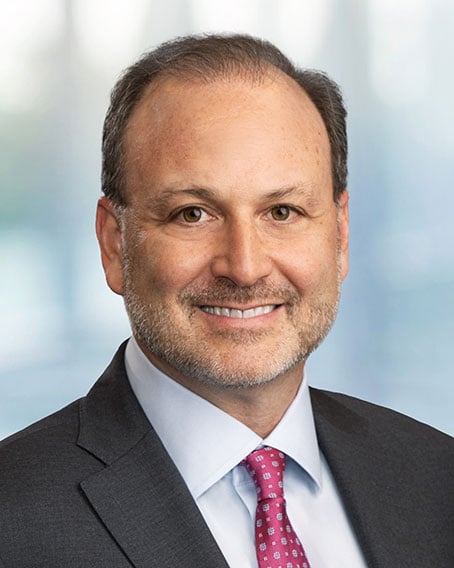Join Ropes & Gray’s life sciences and health care attorneys on a four-part podcast series exploring regulatory, compliance and enforcement changes emanating from Washington, D.C. and the potential impact on life sciences companies in 2023. This first episode will focus on key developments from 2022 that we expect to continue to be significant in 2023. Topics discussed include the Inflation Reduction Act, the Food and Drug Omnibus Reform Act (FDORA), possible legislative action related to orphan drug exclusivity, and the full resumption of domestic and international FDA inspections.
Transcript:
Greg Levine: Hello, and welcome to our 2023 U.S. life sciences regulatory outlook podcast series. I’m Greg Levine, head of the life sciences regulatory and compliance practice group at Ropes & Gray, based in Washington, D.C. Earlier this month, I sat down with several of my colleagues from our Washington, D.C. office to discuss our expectations for the coming year. I was joined by Kellie Combs, Josh Oyster, and Beth Weinman, from our life sciences regulatory and compliance practice group, and Margaux Hall, from our health care practice group. We had a robust discussion that we are releasing as a four-part podcast series. What you’ll be listening to today is part one of that conversation, in which we will explore key 2022 trends that we expect to continue into 2023.
To kick things off, as we prepare to move into 2023, why don't we start off by talking about some of the key events or trends that occurred in 2022 that we think are going to be important in this New Year, as well? Margaux, would you start us off?
Margaux Hall: Sure—I’m happy to jump in here first. The big news of 2022 for the life sciences industry was the Inflation Reduction Act, which is bringing highly consequential changes to Medicare and the drug pricing and market access landscape writ large. Perhaps most noteworthy is that Congress actually achieved the requisite levels of bipartisan consensus to enact sweeping drug pricing legislation. Prior to 2022, notwithstanding keen bipartisan interest in addressing drug pricing, it was the Executive Branch, through agencies, that led the charge in most of the noteworthy federal reforms. That was not the case—2022 was the moment of dramatic legislative reform, and we've seen three big drug pricing changes:
- First, the IRA requires manufacturers of most single-source drugs and biologics to pay rebates to Medicare based on the extent to which their average prices increased faster than inflation. That requirement already went into effect October 1st of last year for Part D drugs, and January 1st of this year for Part B drugs. The inflation rebates are based on Medicare utilization although, by virtue of how they're calculated, there are likely to be spillover effects in other market segments.
- Second, the IRA fundamentally redesigns the Part D benefit. It will eliminate, in 2024, the 5% beneficiary co-insurance requirement in the catastrophic stage of coverage, and establish an annual out-of-pocket cap of $2,000. That's going to be tremendous relief to patients with high Part-D spend. It also fundamentally restructures the Part D benefit phases, and creates a new manufacturer drug discount program that will replace the current coverage cap discount program as of 2025, creating different manufacturer financial responsibility.
- And, third, the IRA authorizes Medicare to directly negotiate prices with manufacturers of certain high-spend Medicare drugs. That negotiation will go into effect starting in 2026 for certain Part D products, and in 2028 for certain Part B products.
The statute specifies a government-determined price, known as the "maximum fair price"—it has to be equal to or less than a statutory ceiling amount that's tied to the product's net price. You might question, notwithstanding the name, whether this ultimate price is "fair" because manufacturers are at risk of huge penalties and excise taxes if they do not comply with the requirements of the IRA. You might also question whether this is truly "negotiated" in the ordinary meaning of that term, given the heavy hand that government's going to play in determining what it regards as the "maximum fair price." We're already seeing concerns about spillover impacts on the market. It's hard to imagine that there will not be those spillover impacts. For one, the maximum fair price will be published, and therefore, known to the general public, including commercial payors and others in the supply chain. And that amount will be published before the maximum fair price goes into effect for Medicare.
We're also seeing open and evolving questions in terms of how to account for the IRA in drug deals, royalty and licensing arrangements, and how to consider commercial contracting in light of the IRA more generally. The Ropes & Gray drug pricing team has issued a series of alerts and we've had a webinar on these topics, so if you want to learn more, I encourage you go to go our drug pricing landing page, where we cover a lot about the IRA.
Greg Levine: Thanks, Margaux. Certainly a ton going on in the drug pricing area, and I know it's going to be extremely consequential for our pharmaceutical clients. Why don't we turn to some of the FDA developments. Josh, would you like to start?
Josh Oyster: Sure—thanks, Greg. On the FDA side in 2022, the biggest development was probably one that happened at the very end of the year with the enactment of the Food and Drug Omnibus Reform Act as part of the government's omnibus appropriations bill. We had been waiting with bated breath the entire year for FDA reform legislation, where the expectation had been that there would be policy reforms and riders added to must-pass FDA user fee reauthorization legislation enacted over the summer. But that didn't happen for a variety of political reasons. And then, December came, and as Congress was considering the omnibus appropriations bill, fortunately, a number of important FDA policy riders and amendments were included as part of that bill, including things like reforms to clinical trial diversity, a modernization of FDA's entire regime for regulating cosmetic products, reforms to accelerated approval, and some other matters that we'll get into, I'm sure, in more detail later on.
Almost as important to me as what was included in the Food and Drug Omnibus Reform Act—or FDORA, at least as I like to call it—was what wasn't included in it. The VALID Act, which would have been a dramatic overhaul of FDA's regulation of laboratory-developed tests and in vitro diagnostics, looked like it was going to be part of that omnibus bill. It looked like it was finally going to cross the finish line and be enacted by Congress, but it didn't get there. It's been something that's been percolating for many, many years as FDA, Congress, and industry have gone back and forth about the appropriate role of FDA in overseeing laboratory-developed tests. It became a very critical, hot-button issue during the pandemic, with respect to COVID-19 diagnostics and tests, but because we didn't get the VALID Act passed last year with the last Congress, its future is now highly uncertain now that we have a divided Congress. Whether there will be enough support for it again just remains to be seen, but it's something we'll certainly be keeping an eye on in 2023.
Greg Levine: That LDT issue is one near and dear to my heart—I've been following that for years. The FDA commissioner has said that maybe they'll take some administrative action in this upcoming year if Congress can't pass legislation. Congress hasn't passed legislation, but you just wonder whether the FDA really has the stomach for it, for those of us who have been through the past battles on this issue. It was very, very difficult under the Obama Administration, and I can't imagine it has gotten any easier in the intervening years to try to take that up again and develop a regulatory framework without specific statutory authorization to do so.
Josh Oyster: For sure.
Greg Levine: Great—thank you, Josh. Kellie or Beth?
Kellie Combs: Thanks, Greg. I'll actually pick up where Josh left off and talk about a topic that did not make it into FDORA. Legislative action related to orphan drug exclusivity was hotly anticipated in the wake of the Catalyst decision. The Catalyst decision now is well over a year old—it was decided by the 11th Circuit in September 2021. That decision held that that scope of orphan drug exclusivity has to align with the rare disease or condition that the drug was designated for rather than the use or indication that the drug ultimately received approval for. And the Catalyst court’s determination conflicted with FDA regulations and FDA's longstanding interpretation of the Orphan Drug Act. The Catalyst court ultimately said that FDA's interpretation violated the plain language of the Food, Drug, and Cosmetic Act. FDA has long taken the position that orphan exclusivity is tied to the use or indication—and what that means, as a practical matter, is that you can have many different approvals, all receiving exclusivity within the same rare disease or condition.
Since the Catalyst decision, interestingly enough, FDA did not make a single orphan drug exclusivity determination, presumably because they were trying to manage litigation risk, but also because they were waiting for a legislative fix. We had seen some language introduced in 2022, but that language did not ultimately make it into FDORA, so there was no codification of FDA's longstanding position. And interestingly enough, shortly after FDORA, FDA announced in January of this year, that it was going to continue to follow the regulations, essentially saying that it had set aside the drug approval, as required by the Catalyst decision, but was not following the Catalyst court's rationale in the future. So, I think we're all going to continue to watch that, given that Congress did not give FDA the fix that it was looking for.
Greg Levine: Thank you for that, Kellie. Beth, what about you?
Beth Weinman: I guess, looking back to 2022 on the enforcement front, I think we can fairly say that FDA's inspectional core is back at it, working hard to whittle down the inspection backlog triggered by an extended disruption due to the pandemic. We saw in 2022, a lot of attention to manufacturing issues. The biggest cases of the year were on the criminal and civil injunctive front, of course, involved alleged lapses in manufacturing controls and, in particular, when safety issues were implicated. We saw a lot of attention to food safety. And I think we will see an increasing number of inspections moving forward—more foreign inspections, and surprise foreign inspections as the appropriations bill passed right at the end of the year provided FDA with $10 million to expand the Agency's pilot program to increase the number of unannounced surprise inspections of foreign facilities, and try to collect some data on the differences on what they see when we have surprise versus announced inspections.
I'll also note, and again, this is a continuing theme—we saw it in 2022, and we'll see it in the future—but failure to follow pre-market review procedures was a big deal with respect to enforcement in COVID, where we had a lot of wholly unapproved products introduced into the market. And we saw it a bit, also, in terms of companies making what FDA saw as the wrong decision, with respect to changes to their products and introducing them without appropriate FDA review. So that, I think, was also a theme in 2022.
Greg Levine: Is that primarily for medical devices or are you including other categories of products, as well?
Beth Weinman: We've seen it, I think, probably more in medical devices, but there's at least one case on the radar, and maybe we'll see more about that case coming out soon, with respect to a failure to file supplements on the drug front.
Greg Levine: Thank you very much to our listeners for tuning in today. We will continue to provide additional news and analysis about regulatory developments and emerging issues from the federal government throughout 2023. You can access that information on our Capital Insights page, on our main Ropes & Gray web page, www.ropesgray.com, by listening to any of our RopesTalk podcasts—including past episodes in this podcast series—in our podcast newsroom on our website, or by subscribing to RopesTalk wherever you listen to podcasts, including on Apple and Spotify. Be sure to check out parts two, three, and four of this podcast series in the coming days. Thanks again for listening.
Stay Up To Date with Ropes & Gray
Ropes & Gray attorneys provide timely analysis on legal developments, court decisions and changes in legislation and regulations.
Stay in the loop with all things Ropes & Gray, and find out more about our people, culture, initiatives and everything that’s happening.
We regularly notify our clients and contacts of significant legal developments, news, webinars and teleconferences that affect their industries.







